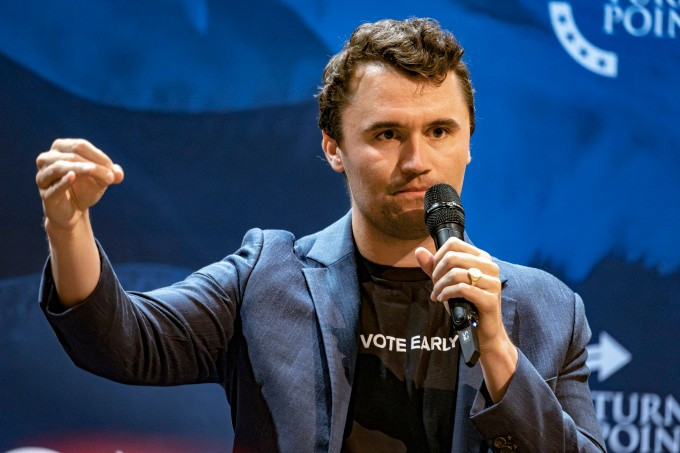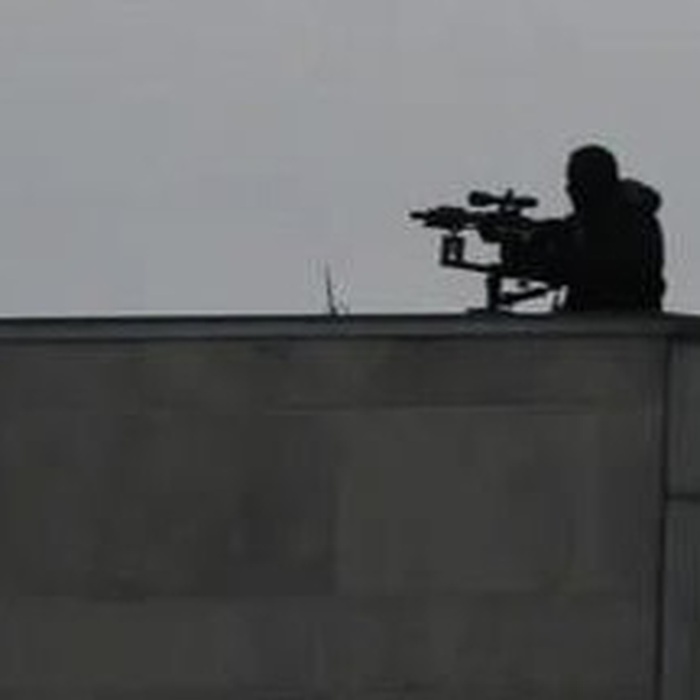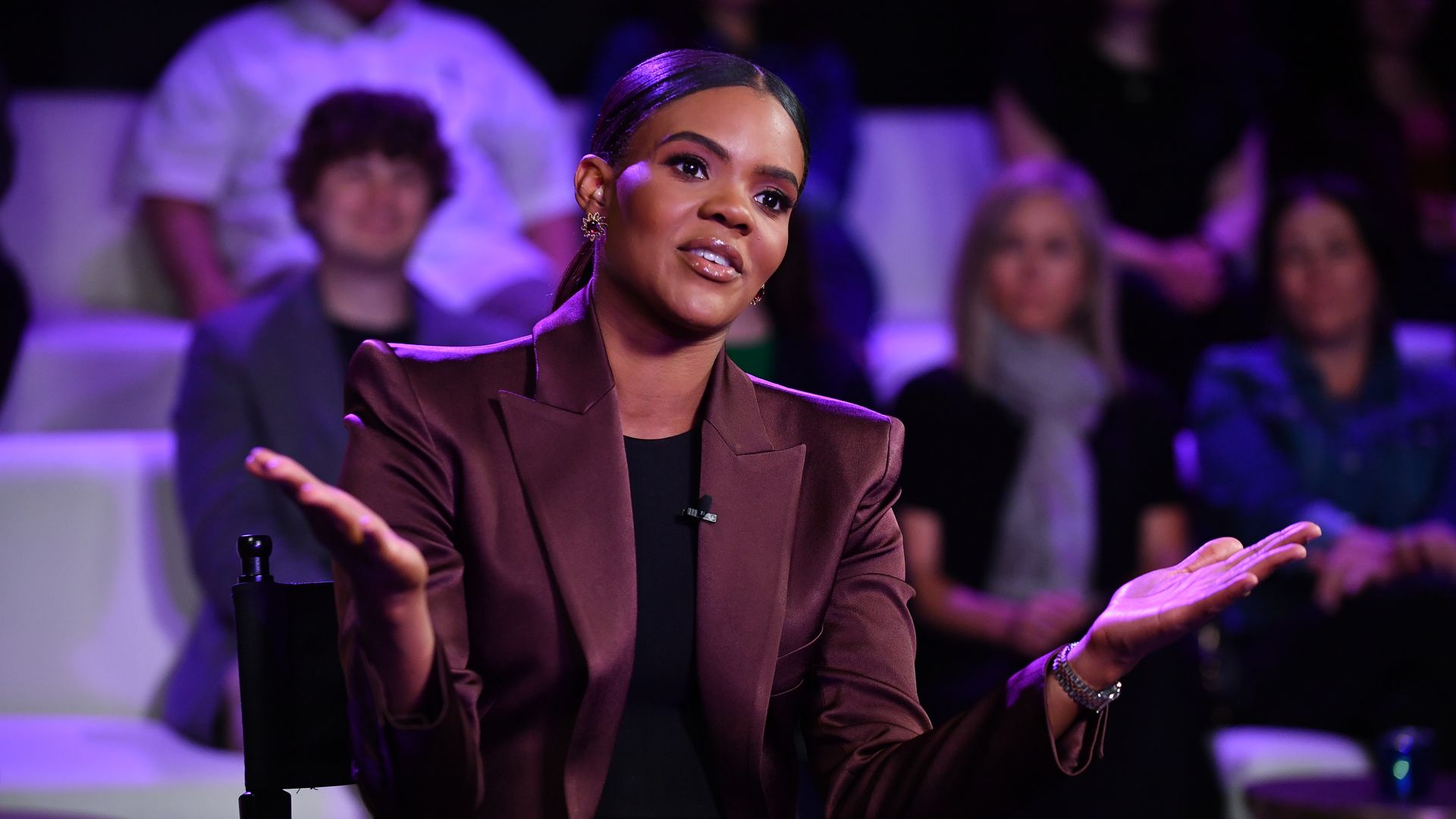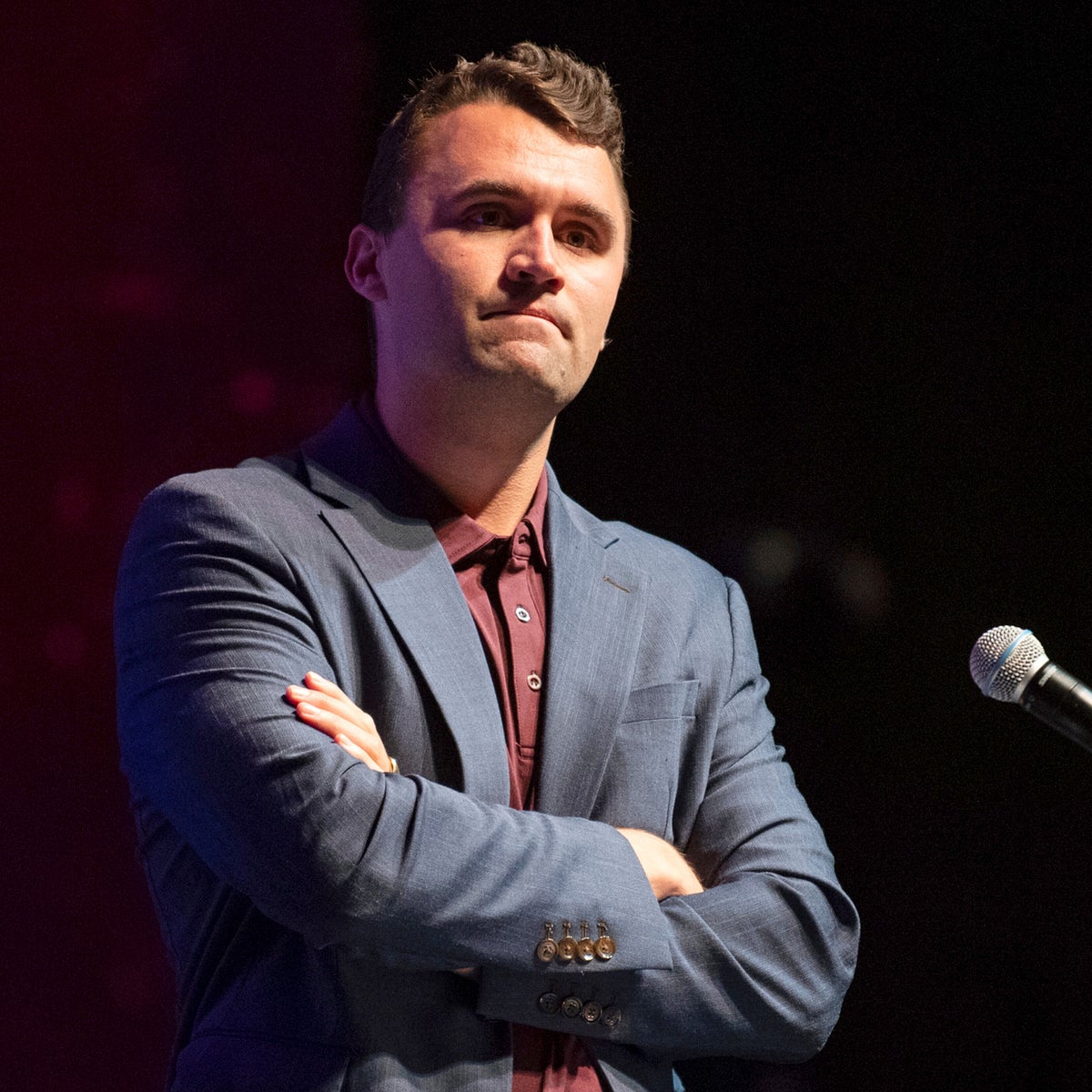A tragic death or a meticulously planned execution? The shocking secrets, lies, and cover-ups surrounding the final hours of Charlie Kirk have just been revealed!.ABC
A tragic death or a meticulously planned execution? The shocking secrets, lies, and cover-ups surrounding the final hours of Charlie Kirk have just been revealed!
The latest disclosures from Joe Rogan and Candace Owens paint a tangled picture full of deception, unbelievable coincidences, and intricate cover-ups that mainstream media has never reported. An impostor appeared unexpectedly at national scenes, while last-minute audits could expose the powerful forces operating behind the scenes. All signs point to the fact that Charlie Kirk’s death was far from straightforward. Was Kirk silenced before he could reveal a truth that might change everything?
A tragic death or a meticulously planned execution? The shocking secrets, lies, and cover-ups surrounding the final hours of Charlie Kirk have sent ripples through the nation, leaving friends, colleagues, and followers in disbelief.
While the official reports paint a picture of an untimely death, the emerging evidence suggests that nothing about this case is as straightforward as it seems. Recent revelations from high-profile figures like Joe Rogan and Candace Owens have brought to light a tangled web of deception, improbable coincidences, and meticulously orchestrated cover-ups—details that mainstream media has largely ignored.
Witnesses report strange occurrences in the days leading up to Kirk’s death, including the sudden appearance of a mysterious impostor at several national events, and whispers of last-minute financial audits that could have exposed influential figures operating behind the scenes. These anomalies have fueled speculation that Kirk may have been silenced before revealing a truth capable of shaking powerful institutions to their core.
While the world watched in shock, questions began to mount. Why were key details of the official investigation inconsistent with witness accounts? Who was the unidentified individual appearing at multiple events with suspicious timing? Could last-minute audits and confidential documents have uncovered truths that someone desperately wanted to hide?
This story is not just about a tragic death; it is about a complex labyrinth of secrets, betrayal, and manipulation. Every lead, every inconsistency, and every revelation brings us closer to understanding the mysterious circumstances that surrounded Charlie Kirk’s final hours.

As the investigation unfolds and whistleblowers come forward, one thing becomes clear: the death of Charlie Kirk may not simply be a case of tragedy, but rather an intricate story of deception with consequences that could change everything we thought we knew.
In the sections that follow, we will examine the events leading up to Kirk’s final hours, uncover hidden secrets and lies, explore the powerful forces working behind the scenes, analyze the swirling theories surrounding his death, and ultimately ask the questions that demand answers.
The final hours of Charlie Kirk’s life are shrouded in mystery, contradictions, and an unsettling sense of foreboding. According to official reports, Kirk spent his last day engaging in routine activities, meeting colleagues, and attending scheduled events. Yet eyewitness accounts paint a very different picture—one filled with strange occurrences, unusual visitors, and inexplicable delays that would later raise serious questions.
Several witnesses reported seeing a mysterious individual—an impostor of sorts—circulating near events where Kirk was scheduled to appear. Descriptions of this person vary, but all accounts suggest a deliberate attempt to blend into the background, avoiding attention while remaining close enough to observe.
Security footage from various locations confirmed that this figure appeared multiple times at national events within hours of Kirk’s final public appearances. Analysts and investigators were quick to note the improbability of such coincidences, suggesting a level of orchestration far beyond chance.
Kirk’s interactions during these final hours were also peculiar. Colleagues described him as unusually guarded and distracted, often abruptly ending conversations or avoiding discussions about sensitive topics.
Some sources hint that he had recently uncovered information that could have implicated high-level figures, though details remain unverified. The timing of his actions, combined with the presence of the impostor and other unusual events, has fueled speculation that Kirk may have sensed an imminent threat.
The official timeline indicates that Kirk returned to his residence in the late evening, where he was reportedly alone for several hours. Neighbors noted unusual comings and goings during this period—vehicles that appeared unfamiliar and visitors who left discreetly, almost as if trying to avoid being noticed. At the same time, digital records suggest that Kirk was engaged in intensive online activity, corresponding with associates about urgent matters and reviewing sensitive documents.
Medical reports from the scene confirmed Kirk’s untimely death but left several questions unanswered. Forensic experts noted anomalies in the timing and circumstances of his passing, suggesting that external factors may have contributed.
While the cause of death was officially listed as natural, the discrepancies between witness accounts, digital evidence, and physical observations have prompted independent investigators to call for a thorough reevaluation.

The combination of the impostor’s presence, last-minute interactions, unusual visitors, and inconsistencies in the official report paints a troubling picture. It raises the possibility that Kirk’s final hours were manipulated, monitored, or influenced by unseen forces. Whether through intimidation, surveillance, or more direct interference, these events suggest that Kirk’s death may have been anything but accidental.
As the hours leading to his death are dissected, one overarching question emerges: Was Charlie Kirk aware of the danger surrounding him, and if so, what steps did he take to protect the truth he might have uncovered?
The evidence points toward a deliberate orchestration that, if true, transforms what initially seemed like a tragic loss into a carefully executed series of events designed to silence a voice that threatened to expose powerful interests.
The mysterious circumstances of these final hours demand closer examination, and the next section will delve into the secrets, lies, and cover-ups that came to light only after Kirk’s passing, revealing a network of deception that could shake the foundations of public trust.
In the aftermath of Charlie Kirk’s death, a series of revelations began to emerge, exposing a web of deception, secrecy, and manipulation that few could have anticipated. Whistleblowers, insiders, and high-profile commentators like Joe Rogan and Candace Owens began revealing details that painted a far more complex picture than the official reports suggested.
One of the most startling discoveries involved discrepancies in Kirk’s communications in the days leading up to his death. Emails and text messages, now partially verified by independent investigators, suggested that Kirk had been corresponding with individuals connected to sensitive political and financial matters.
These communications hinted at knowledge of potential wrongdoing by influential figures, knowledge that could have significant consequences if made public. The timing of these messages, coupled with his unusual behavior, raises the troubling possibility that Kirk’s death was intended to prevent this information from surfacing.
Further complicating matters was the presence of the mysterious impostor, who appeared at multiple locations in the hours before Kirk’s passing. Witness accounts and security footage show that this individual seemed to shadow Kirk’s movements, often appearing where he was expected to be or where sensitive discussions were taking place. While some initially dismissed these sightings as coincidences, investigators began noting a pattern that suggested deliberate surveillance and interference.

Additional revelations came from financial audits conducted just before Kirk’s death. These audits, which were reportedly unplanned, had the potential to uncover hidden transactions and affiliations involving powerful interests.
Sources familiar with the matter indicated that the audits raised alarms among those who stood to be exposed, creating a strong motive for suppressing any incriminating findings. The convergence of these audits with the timing of Kirk’s death adds another layer of suspicion, indicating that external forces may have acted to preempt the disclosure of damaging information.
Even more shocking were the inconsistencies in the official narrative of Kirk’s final hours. Witnesses reported events that conflicted with the official timeline, and digital evidence—including online activity and surveillance records—suggested that Kirk was engaged in sensitive research or communications when, according to the reports, he was resting. These contradictions highlight not only errors in the official account but also the possibility of deliberate obfuscation designed to hide critical details.
Furthermore, multiple insiders hinted at a culture of secrecy surrounding Kirk’s work and his associations. They described an environment in which information was tightly controlled and any deviation from the official story was met with swift and quiet suppression. The cumulative effect of these revelations portrays a system designed to conceal the truth, manipulate public perception, and protect the interests of those in power.
Taken together, the discovered secrets and lies suggest that Kirk’s death was not merely an unfortunate tragedy but possibly the result of a carefully orchestrated effort to silence him.
From unexplained surveillance and sudden financial audits to conflicting witness testimonies and restricted access to critical information, the evidence points to a network of deception that demanded answers.
As more details emerged, it became increasingly clear that understanding the full scope of this network required delving into the hidden forces operating behind the scenes—those with both motive and means to influence the course of events surrounding Charlie Kirk’s final hours. This will be the focus of the next section, which examines the powerful entities that may have orchestrated or benefited from his untimely death.
Candace Owens Exposes Erika’s Secret Plot Targeting Charlie Kirk – Shocking Leaked Video Reveals Betrayal! No one expected Erika — once seen as completely innocent — to be suspected of orchestrating a carefully hidden plan for months. ABC

In an astonishing turn of events that has the online world buzzing, Candace Owens has dropped what can only be described as a bombshell revelation regarding the mysterious circumstances surrounding Charlie Kirk.
For months, speculation had been swirling about what really happened, and many had assumed that everything about the case was straightforward. But as it turns out, there is far more to this story than meets the eye.
Erika, a figure previously regarded by many as completely innocent, has now emerged at the center of a web of intrigue and deception. Newly surfaced footage and documents reveal a carefully orchestrated plan, one that has allegedly been carried out in the shadows for months.
According to Candace Owens’ investigation, Erika may not have been acting alone, but the trail of evidence points clearly to her involvement in manipulating events from behind the scenes.
The first shocking detail comes from a series of previously unreleased videos showing Charlie Kirk’s movements in the days leading up to the incident. Every step, it seems, had been under surveillance.

Footage shows Charlie entering locations where he appeared unaware of being watched, his schedule seemingly documented by someone with insider knowledge. The implications are chilling: someone close enough to monitor him consistently could only be working with specific intent.
Tyler Robinson, a name now at the heart of many online discussions, also appears repeatedly in these leaked materials. His movements, though subtle, show a pattern of coordination with unknown entities.
Candace Owens highlights certain moments where Tyler’s actions seem to coincide with key events affecting Charlie. While some may argue these coincidences are circumstantial, the sheer number of them has raised questions about his role — whether knowingly complicit or unwittingly manipulated.
Candace Owens’ revelations do not stop at merely identifying potential suspects. She meticulously pieces together a timeline, reconstructing each step of the alleged plot.
From secret meetings at undisclosed locations to the subtle redirection of Charlie’s transportation routes, every move appears deliberate. The deeper the investigation goes, the more it becomes apparent that what appeared to be random events were, in fact, carefully engineered.
One particularly compelling segment of the leaked footage shows Erika in conversations with unknown individuals, her expressions guarded and her tone measured.
While no incriminating words are explicitly spoken, body language experts consulted by Owens suggest a level of coordination that cannot be dismissed as mere coincidence. It is in these nuanced interactions that Candace Owens identifies what she calls the “signature of the mastermind” — behaviors that signal both awareness and control over unfolding events.
The implications of these revelations extend far beyond Erika herself. If the claims are accurate, they suggest a level of premeditation and planning that has serious consequences.
Candace Owens emphasizes that this is not a case of simple misunderstanding or accidental mismanagement. Rather, the evidence points to a structured, deliberate effort to influence, manipulate, and potentially endanger Charlie Kirk.
Public reaction to Owens’ revelations has been swift and intense. Social media platforms are flooded with discussions, theories, and debates. While some users vehemently defend Erika, insisting she could not possibly be involved in such a plot, others find the presented evidence compelling. The leaked materials, combined with Owens’ investigative analysis, have forced many to reconsider their prior assumptions.
Among the most alarming discoveries are several key documents that appear to have been overlooked in earlier reports. These include schedules, location maps, and correspondence that, when pieced together, depict a network of planning that is both intricate and deliberate.
Candace Owens notes that the specificity of these documents makes it difficult to dismiss the plot as hypothetical. Each document aligns with observed actions and timings, creating a narrative that is difficult to refute.

The role of Tyler Robinson remains one of the more enigmatic aspects of the case. While some sources speculate he was merely a pawn, others suggest he may have played a more active role, knowingly or unknowingly facilitating Erika’s plans.
Candace Owens’ investigation highlights moments where Tyler’s actions, seemingly minor in isolation, fit perfectly within a broader pattern. The theory suggests that even small, seemingly inconsequential steps were part of a larger design — a design that only someone with intimate knowledge of Charlie’s routines could orchestrate.
Equally striking are the psychological elements that Owens examines. She delves into the mindset required to execute such a complex plan, pointing out that orchestrating multiple layers of deception requires careful attention to detail, patience, and strategic foresight. Erika, as a central figure in this narrative, is portrayed as someone capable of these traits, further intensifying public fascination with the case.
Candace Owens also raises questions about who else might be involved. Could there be individuals closer to Charlie than anyone realizes, subtly influencing events from the background?
The leaked footage hints at interactions and communications with other unidentified figures, suggesting that the network of influence may extend beyond Erika alone. This opens the door to speculation about motives, alliances, and potential hidden agendas that have yet to surface publicly.
The investigation also sheds light on the meticulous way the plot was executed. From surveillance methods to the timing of key events, every detail appears intentional.
Candace Owens reconstructs instances where Charlie’s itinerary was altered, meetings postponed, and communications intercepted — all pointing to a level of planning that suggests professional expertise. This raises further questions about the resources and support Erika may have had at her disposal.
Public discourse has been fueled by Owens’ insistence on transparency and the need to question official narratives. By presenting the evidence and outlining her reasoning, she encourages viewers and readers to consider possibilities beyond surface-level assumptions. The result is a renewed scrutiny of previously accepted explanations, fostering debate and critical thinking among the community.

One of the most discussed aspects of the leaked materials is a segment showing Erika reviewing detailed notes and coordinating with unknown parties. Analysts suggest that her body language and mannerisms indicate confidence and authority — traits often associated with someone orchestrating events from behind the scenes. These observations, while interpretive, add weight to Owens’ argument that Erika played a central role in the alleged plot.
Candace Owens also explores the implications of the plot’s discovery on public perception. If Erika’s involvement is substantiated, it could dramatically alter how people view Charlie’s interactions, the loyalty of those around him, and the broader dynamics within his circle. The potential fallout extends beyond individual reputations, touching on trust, influence, and the vulnerability of even high-profile figures to calculated schemes.
Social media reaction has been divided. Some users express outrage at Erika, calling for accountability and further investigation. Others defend her, suggesting that the evidence is circumstantial or manipulated.
Owens addresses these debates by emphasizing the importance of analyzing the totality of evidence, rather than focusing on isolated incidents. In her view, the combination of leaked footage, documents, and observed patterns creates a compelling case that warrants serious consideration.
Tyler Robinson’s role continues to be a focal point for discussion. Candace Owens highlights instances where his movements coincide with key events affecting Charlie, suggesting a degree of involvement that cannot be ignored.
Whether acting intentionally or unwittingly, Tyler’s actions appear to align with the broader strategy allegedly executed by Erika. This raises important questions about responsibility, influence, and complicity in complex plots.
The investigation also uncovers subtle signals that had previously gone unnoticed. Small changes in Charlie’s schedule, unexpected interactions, and inconsistencies in reported events all form pieces of a puzzle that, when assembled, reveal a more intricate story than previously believed. Candace Owens emphasizes that understanding these details is crucial for anyone seeking to grasp the full scope of the alleged conspiracy.

Public interest in the story has skyrocketed, with thousands of comments, shares, and discussions appearing across social media platforms. Users dissect every detail, speculate on hidden motives, and debate the credibility of Owens’ evidence. The result is a dynamic, ongoing conversation that continues to evolve as new insights emerge.
Candace Owens’ analysis culminates in a detailed reconstruction of the alleged plot. By aligning timelines, actions, and communications, she presents a narrative that highlights both Erika’s potential role and the involvement of others in executing a sophisticated plan. The clarity of this reconstruction has been praised by some observers as a masterful demonstration of investigative skill.
As the story continues to unfold, questions remain. Who else might be implicated? What are the long-term implications for those involved? How might public perception shift as more details emerge? Candace Owens leaves these questions open, encouraging viewers and readers to follow the evidence and draw their own conclusions.
Ultimately, this investigation highlights the complexity of human relationships, the potential for deception, and the importance of critical scrutiny. Candace Owens’ revelations provide a compelling case study in how appearances can be deceiving and how the truth often lies beneath layers of planning and concealment.
For those following the story, the message is clear: nothing should be taken at face value. Every movement, every interaction, and every decision may carry hidden significance. Owens’ work encourages a deeper understanding of the events surrounding Charlie Kirk, Erika, and Tyler Robinson, offering insights that challenge conventional narratives and invite ongoing discussion.
As Candace Owens continues her deep dive into the unfolding saga, more questions emerge that challenge the public’s understanding of what truly transpired. One of the most intriguing aspects of the case involves the subtle interplay of timing and opportunity.
Every decision, every movement made by Charlie Kirk appears, in retrospect, to have been anticipated by someone with intimate knowledge of his schedule. This level of foresight points toward careful planning, suggesting that the alleged orchestrators — primarily Erika, according to Owens — had access to more information than previously assumed.
The leaked footage provides additional layers of detail that are both fascinating and disturbing. There are moments when Charlie interacts with individuals who, on the surface, seem unrelated to the events that followed. However, when these interactions are examined alongside the broader timeline, they reveal patterns of influence and manipulation.
Candace Owens highlights specific instances where seemingly minor encounters may have been strategically designed to divert attention, mislead observers, or even plant subtle suggestions affecting Charlie’s decisions.
Tyler Robinson’s involvement continues to be a point of intense speculation. While some might argue that his actions were coincidental, the sheer number of alignments with critical events challenges this assumption.
Owens meticulously catalogs these moments, illustrating how each step, no matter how small, fits into a larger framework. The analysis underscores the complexity of the situation, demonstrating that even individuals not directly responsible for planning can play a pivotal role in a broader scheme.
Beyond the immediate circle of Erika and Tyler, Owens’ investigation raises the possibility of other, previously unidentified actors operating behind the scenes. The footage hints at interactions with shadowy figures whose motives remain unclear.
Could these individuals have provided logistical support, intelligence, or strategic guidance? The speculation adds another dimension to the narrative, suggesting that the conspiracy — if it can be called that — may be larger and more sophisticated than initially thought.
Candace Owens also delves into the psychological elements of deception and manipulation. She points out that orchestrating a plan of this magnitude requires not just careful timing but also a keen understanding of human behavior. Erika, as described in the investigation, demonstrates a calculated awareness of her environment and the people around her.
The ability to predict responses, anticipate reactions, and adjust plans accordingly is highlighted as a hallmark of someone capable of executing such an intricate plot.
Public reaction to these revelations has been intense and, in many cases, polarized. Social media users dissect every frame of leaked video, every detail in the documents, and every action taken by the central figures. Some argue that Erika’s innocence is still plausible, while others believe the pattern of evidence points convincingly toward her central role. Owens encourages critical thinking, urging her audience to evaluate the totality of evidence rather than focusing on isolated elements.
The complexity of the alleged plot also extends to the communications between individuals. Candace Owens notes that even small interactions — a phone call, a text message, or a brief meeting — may have had outsized significance within the broader scheme. The investigation identifies patterns suggesting coordination, surveillance, and subtle influence, reinforcing the idea that multiple layers of planning were involved.





